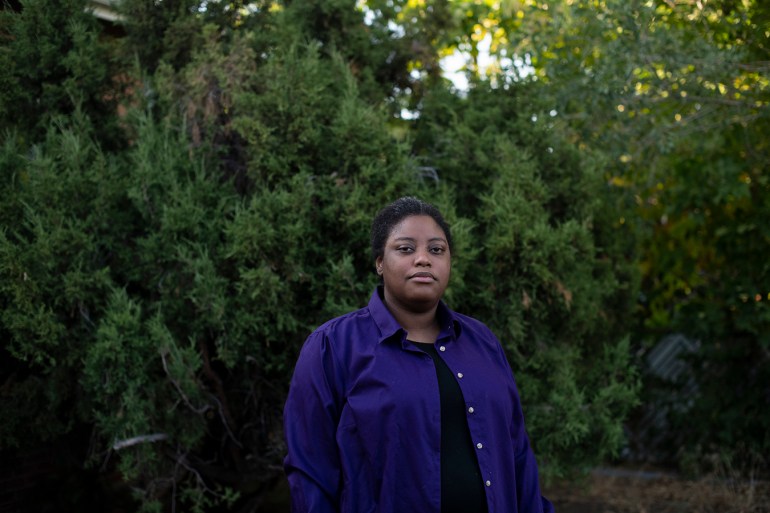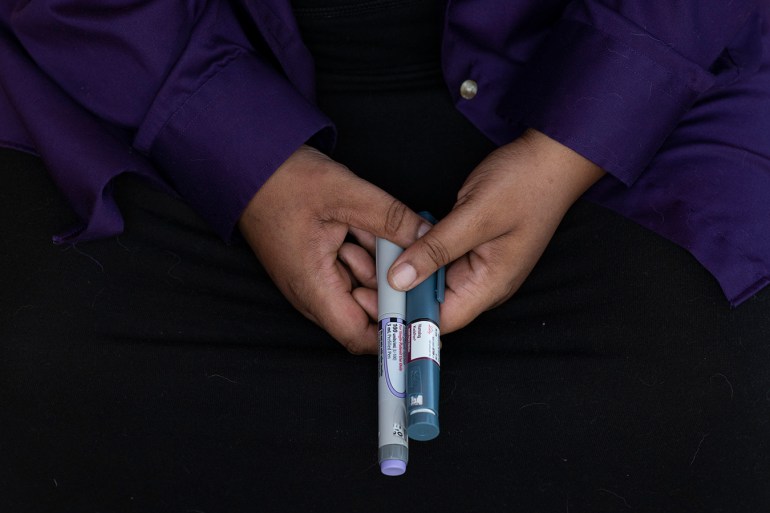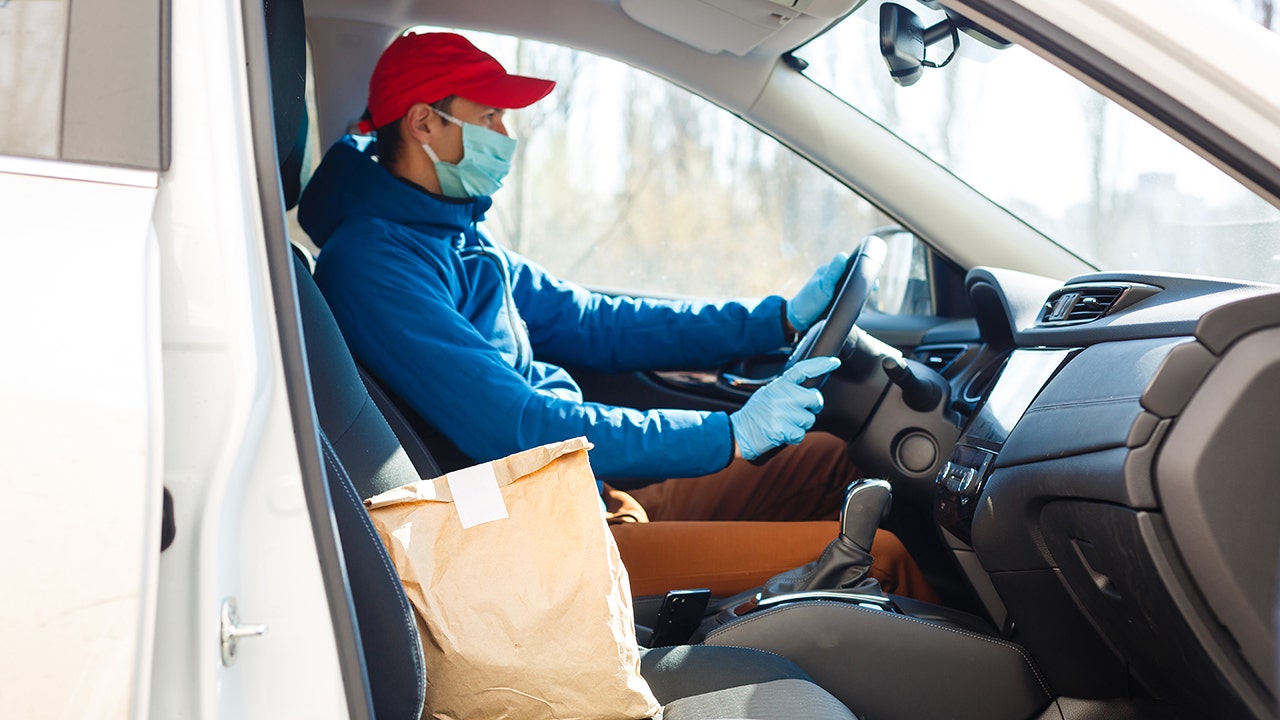DENVER — D.j. Mattern had her Form 1 diabetes below regulate until eventually COVID’s financial upheaval price tag her spouse his lodge routine maintenance career and their wellness coverage. The 42-calendar year-outdated Denver female suddenly faced insulin’s exorbitant checklist value — everywhere from $125 to $450 for each vial — just as their household revenue shrank.
She scrounged additional insulin from pals, and her health practitioner gave her a couple of samples. But as she rationed her provides, her blood sugar rose so large her glucose check couldn’t even register a range. In June, she was hospitalized.
“My blood was too acidic. My procedure was shutting down. My digestive tract was paralyzed,” Mattern explained, immediately after a few weeks in the clinic. “I was pretty much close to dying.”
So she turned to a rising underground community of people today with diabetes who share extra insulin when they have it, cost-free of cost. It was not meant to be this way, many assumed, just after Colorado last year was the initial of 12 states to put into action a cap on the copayments that some insurers can demand consumers for insulin. But as the COVID pandemic has prompted individuals to drop positions and health insurance policy, desire for insulin sharing has skyrocketed. Numerous individuals who the moment had very good insurance policy are now realizing the $100 cap is only a partial remedy, implementing just to condition-regulated wellness strategies.
Colorado’s cap does practically nothing for the vast majority of men and women with employer-sponsored strategies or those people without the need of coverage protection. In accordance to the point out chapter of Type 1 Worldwide, an insulin obtain advocacy group, only 3% of clients with Variety 1 diabetic issues below 65 could advantage from the cap.
Such legislation, often backed by pharmaceutical businesses, give the perception that points are increasing, reported Colorado chapter leader Martha Bierut. “But the actuality is, we have a a great deal longer street forward of us.”
The wrestle to afford to pay for insulin has pressured several individuals into that underground community. By social media and word-of-mouth, people in want of insulin connect with counterparts who have a provide to spare. Insurers ordinarily permit patients a set volume of insulin per thirty day period, but patients use varying amounts to control their blood sugar ranges dependent on aspects this kind of as their food plan and exercise that working day.

Just after D.j. Mattern’s partner misplaced his position throughout the coronavirus pandemic, the couple shed their well being insurance plan. Mattern, who has Form 1 diabetes, was instantly faced with obtaining insulin at checklist value, which ranges any place from $125 to $450 for each vial.(Rachel Woolf for KHN)

Mattern turned to an underground network to safe insulin for her Type 1 diabetic issues ahead of not too long ago qualifying for Medicaid. At residence in Denver, on Sept. 24, Mattern displays her insulin pens.(Rachel Woolf for KHN)
However it is illegal to share a prescription treatment, those people included say they simply just really do not treatment: They are out to help save lives. They bristle at the recommendation that the exchanges resemble back again-alley drug bargains. The provides are provided freely, and no revenue adjustments hands.
For individuals who simply cannot afford their insulin, they have minor choice. It is a your-funds-or-your-existence state of affairs for which the American free-marketplace health care process appears to be to have no solution.
“I can pick not to purchase the Iphone or a new car or to have avocado toast for breakfast,” reported Jill Weinstein, who life in Denver and has Kind 1 diabetes. “I just can’t decide on not to buy the insulin, due to the fact I will die.”
Exacerbated by the Pandemic
Surveys carried out before the pandemic confirmed that 1 in 4 persons with possibly Style 1 or Type 2 diabetes had rationed insulin due to the fact of the price. For many Blacks, Hispanics and Native Americans, the pinch was in particular negative. These populations are additional possible to have diabetic issues and also additional possible to facial area financial disparities that make insulin unaffordable.
Then COVID-19 arrived, with financial tension and the virus itself hitting individuals in all those teams the most difficult.
This year, the American Diabetic issues Affiliation reported a surge in phone calls to its disaster hotline with regards to insulin accessibility problems. In June, the group discovered, 18% of men and women with diabetes were unemployed, as opposed with 12% of the common general public. Numerous are wrestling with the tricky alternatives of no matter whether to pay for food, hire, utilities or insulin.
Rep. Dylan Roberts, a Democrat who sponsored Colorado’s copay cap bill, mentioned legislators understood the evaluate was only the initial action in addressing significant insulin expenditures. The legislation also tasked the state’s legal professional basic to create a report, owing Nov. 1, on insulin affordability and methods.
“We went as far as we could,” Roberts explained. “While I experience Colorado has been a chief on this, we have to have to do a total good deal additional the two at the state and countrywide degree.”
In accordance to the American Diabetes Affiliation, 36 other states have launched insulin copay cap laws, but the pandemic stalled progress on most of these payments.
Insulin prices are higher in the U.S. simply because several limitations exist for what pharmaceutical brands can cost. Three large drugmakers dominate the insulin marketplace and have raised charges in around lockstep. A vial that 20 yrs ago charge $25 to $30 now can operate 10 to 15 situations that a lot. And folks with diabetic issues can need as many as four or 5 vials per month.
“It all boils down to cost,” mentioned Gail deVore, who lives in Denver and has Variety 1 diabetes. “We’re the only created country that charges what we cost.”
Before the COVID disaster induced border closures, individuals usually crossed into Mexico or Canada to get insulin at a fraction of the U.S. selling price. President Donald Trump has taken measures to lessen drug selling prices, which include permitting for the importation of insulin in some scenarios from Canada, but that approach will just take months to employ.
The Kindness of Strangers
DeVore posts on social media 3 or four situations a calendar year inquiring if anyone needs provides. While she’s normally encountered desire, her previous tweet in August garnered 12 responses within just 24 hours.
“I can feel the stress and anxiety,” deVore said. “It’s unbelievable.”
She recalled aiding 1 young guy who experienced moved to Colorado for a new occupation but whose well being insurance coverage didn’t kick in for 90 days. She utilized a map to pick a random intersection halfway involving them. When deVore arrived on the dusty rural road just after dim, his motor vehicle was presently there. She handed him a vial of insulin and screening supplies. He thanked her profusely, nearly in tears, she reported, and they parted means.
“The desperation was noticeable on his facial area,” she stated.
It’s unclear just how prevalent these kinds of sharing of insulin has grow to be. In 2019, Michelle Litchman, a researcher at the University of Utah’s Faculty of Nursing, surveyed 159 sufferers with diabetic issues, getting that 56% experienced donated insulin.
“People with diabetes are at times labeled as noncompliant, but several men and women do not have accessibility to what they will need,” she said. “Here are people today who are truly striving to come across a way to take treatment of on their own.”
If insulin affordability does not boost, Litchman suggested in a journal write-up, health and fitness treatment suppliers may have to coach patients on how to safely interact in underground exchanges.
The hashtag #Insulin4all has grow to be a widespread way of amplifying calls for assist. People today often write-up photos of the materials they have to share, even though other folks insert numbers or asterisks in words to avoid social media companies eliminating their posts.
Whilst drug manufacturers offer you restricted aid courses, they usually have lengthy software procedures. So they typically really don’t assistance the individual who unintentionally drops her final glass vial on a tile ground and finds herself out of insulin for the rest of the month. Unexpected emergency rooms will address people in crisis and have been known to give them an more vial or two to acquire residence. But each individual crisis takes a toll on their very long-time period wellness.
Which is why associates of the diabetic issues neighborhood continue to look out for one yet another. Laura Marston, a attorney with Type 1 diabetic issues who assisted to expose insulin pricing practices by Massive Pharma, mentioned two of the individuals she initial aided protected insulin, each girls in their 40s, are in failing well being, the outcome of a lifetime of issues controlling their condition.
“The previous I listened to, a person is in end-phase renal failure and the other has by now had a partial limb amputation,” Marston claimed. “The effects of this, what we see, you can not switch your back again on it.”
The underground sharing is how Mattern secured her insulin in advance of lately qualifying for Medicaid. When a person on a community Facebook group asked if any person essential anything in the midst of the pandemic, she replied with a single phrase: insulin. Quickly, an Uber driver arrived with a few of insulin pens and substitute sensors for her glucose check.
“I knew it was not altogether authorized,” Mattern stated. “But I understood that if I did not get it, I wouldn’t be alive.”

